Savory and comforting, this simmered kabocha squash side dish is easy to prepare and so onolicious.
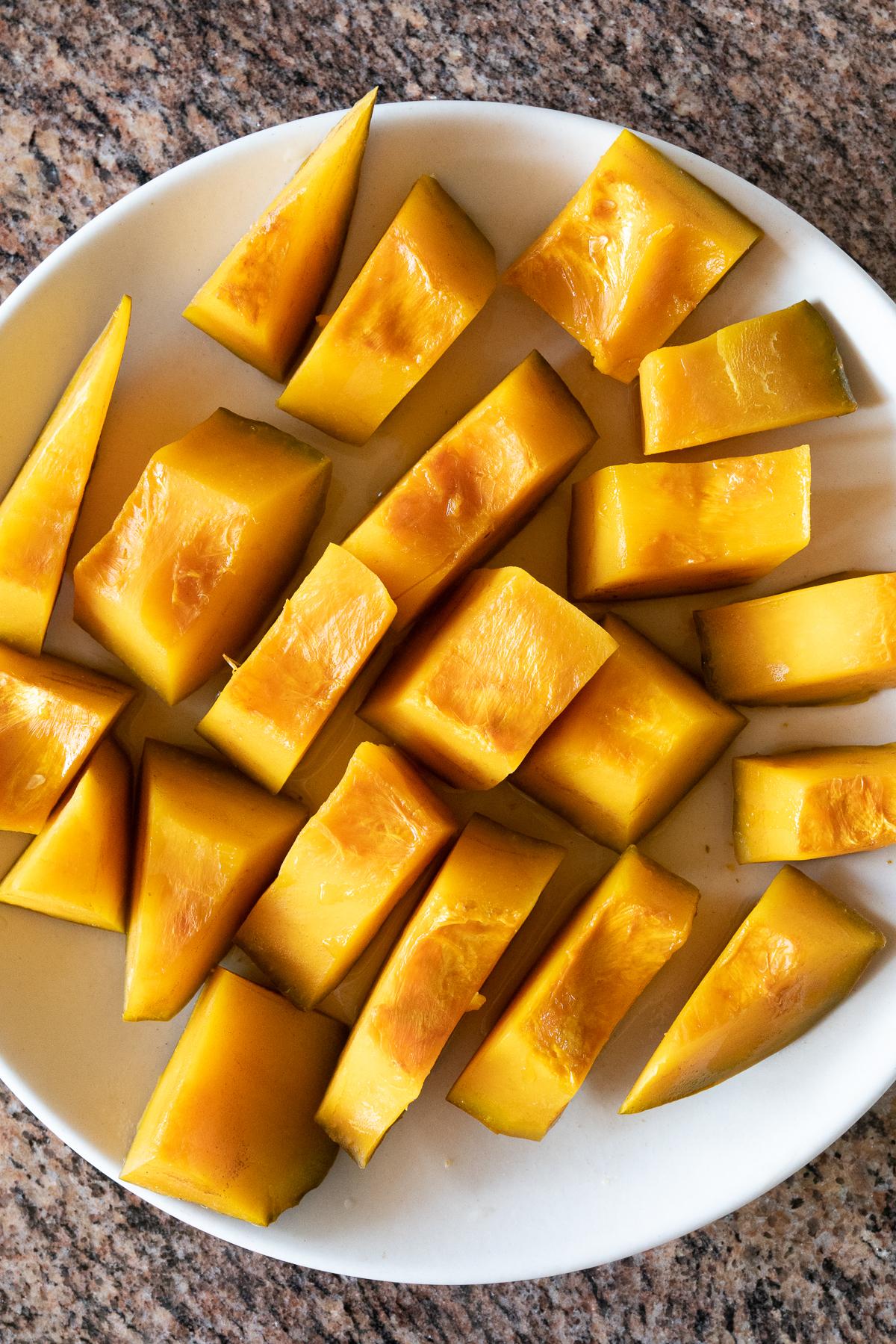
Simmered Kabocha
If you've been to any local Japanese restaurant in Hawaii, you've probably seen this kabocha squash dish on the menu. The kabocha is diced into small pieces and simmered in a savory mix of dashi (or can substitute chicken broth), mirin, soy sauce, and salt.
Simmered kabocha is offered as a popular Japanese side dish or part of a lunch set. You can also find it in the prepared foods section of Japanese markets like Marukai and Nijiya.
Local okazuyas and bento shops like Teruya's Andagi also offer simmered kabocha either a la carte or as part of a bento set.

What Is Kabocha Squash?
Kabocha is a Japanese squash that you can easily find at markets in Hawaii. On the mainland, you'll want to check a Japanese supermarket.
Kabocha is my favorite type of squash to eat! When cooked, it becomes tender and creamy, a tiny bit sweet and super comforting.
Kabocha has dark green skin and orange flesh. You can eat the skin once it's cooked, so no need to peel the skin.
Note from a local: On the mainland people refer to kabocha as "kabocha squash" but in Hawaii we just call it "kabocha." Everyone here already knows kabocha is a squash so no need to explain haha.
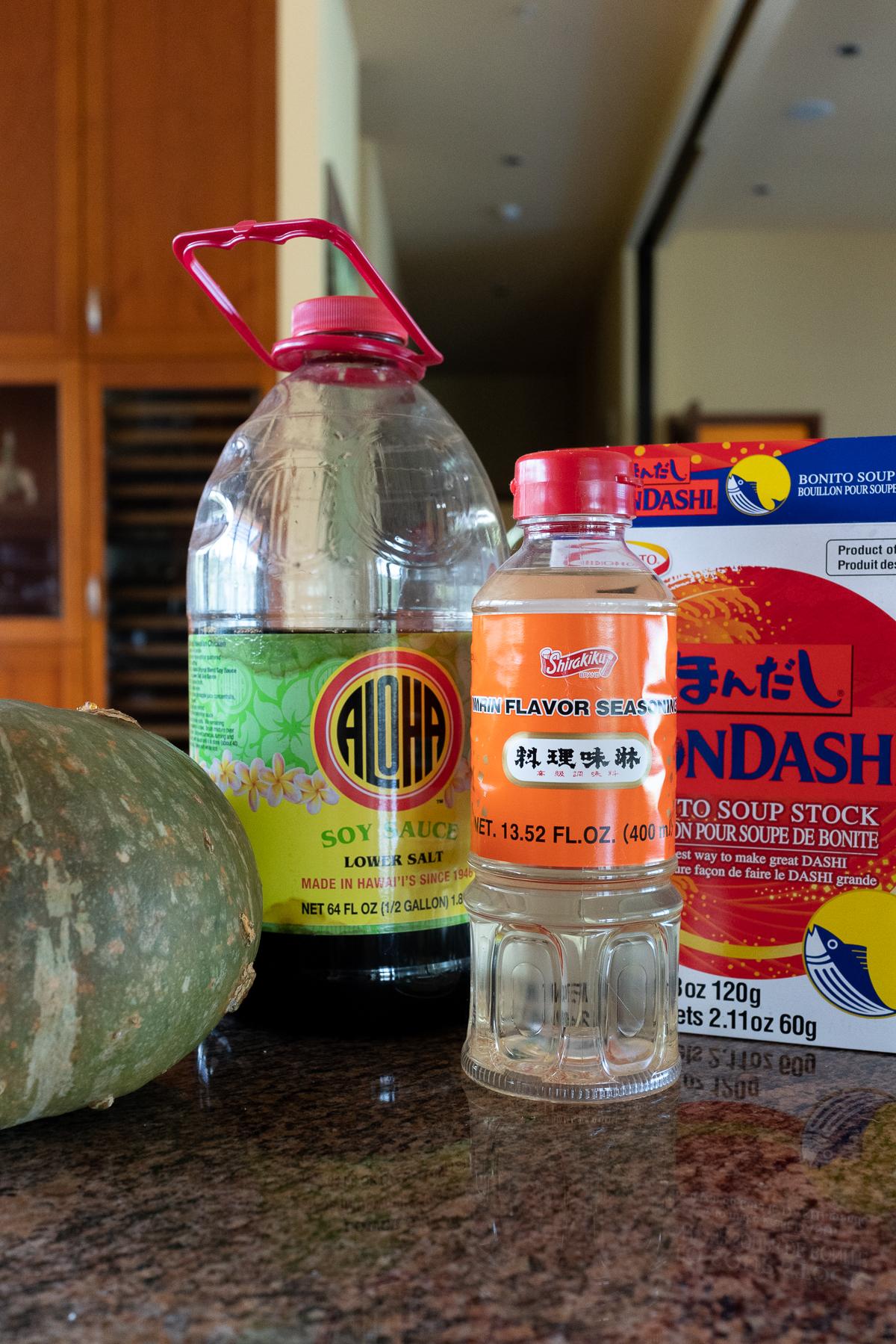
Ingredients
- Kabocha - You can find fresh kabocha at most markets in Hawaii. If you're on the mainland, check Chinese and Japanese markets. The markets usually sell both whole and half kabocha (you only need a half for this recipe). Or you can buy a whole kabocha and use the other half to make roasted kabocha or kabocha soup ^_^
- Dashi - Use dashi if you don't have chicken stock.
- Mirin
- Soy Sauce - Ok to use low sodium soy sauce.
- Salt
Step by Step Directions
How to cook kabocha squash? There are many simmered kabocha squash recipes out there, and this is the most common version you'll find in Hawaii.
It's easy to make. All you need is half a kabocha.
Wash and clean the skin and remove and discard the seeds.
Tip: If you feel discarding the seeds is wasteful, you can also salt and roast the seeds for snack (cook them the same way you'd cook pumpkin seeds).
Then cut the kabocha into even 1-½ inch pieces.
Get a large saucepan and place the kabocha pieces into the saucepan. Try to fit it all in a single layer (piling the kabocha on top of each other will cause the edges of the pieces to break off while cooking).
Add the liquids and seasoning ingredients (dashi, mirin, soy sauce, and salt). Then put the lid on the saucepan and bring it to a boil.
Once boiling, turn the heat down to low, remove the lid and let simmer for another 15 minutes (you want the kabocha to be tender but not mushy).
Then it's ready to eat ^_^
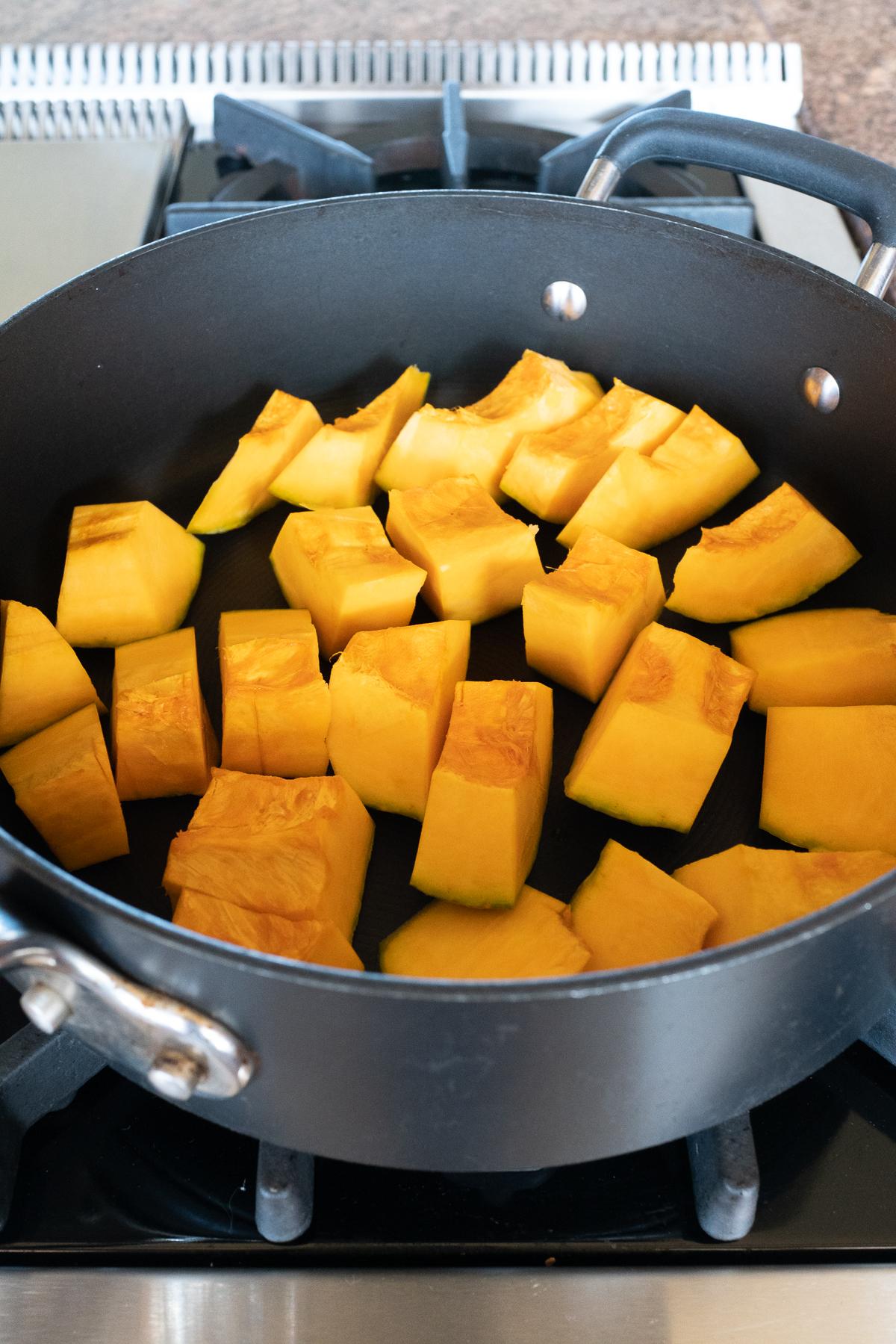
Honolulu Star-Advertiser
This recipe is adapted from the Honolulu Star-Advertiser. Reading the local newspaper is something I do every morning. I read the print edition when in Hawaii, and download the pdf copy when I'm on the mainland.
Wednesdays are the best because the newspaper comes with the Crave section, which is a standalone food insert. This section republishes a few large food articles from the The New York Times, but the best part about this insert is the local stuff (even the ads and promotions in the Crave section are pretty neat!)
There's always a recipe or two, contributed by a local company or home cook. What I love is that the recipes are tasty and fairly simple things you'd actual make at home. Many feature items already found in a local Hawaii pantry.
An October 14, 2020 article by Lynette Lo Tom featured a recipe for Betty Hirozawa’s Kabocha. The kabocha recipe Hawaii was kindly shared by her children after Betty passed away. I adapted the recipe a bit. Betty's version calls for ⅓ cup of sugar. I removed the sugar completely. The mirin adds enough sweetness for my tastes, but feel free to add a little sugar if you'd like.
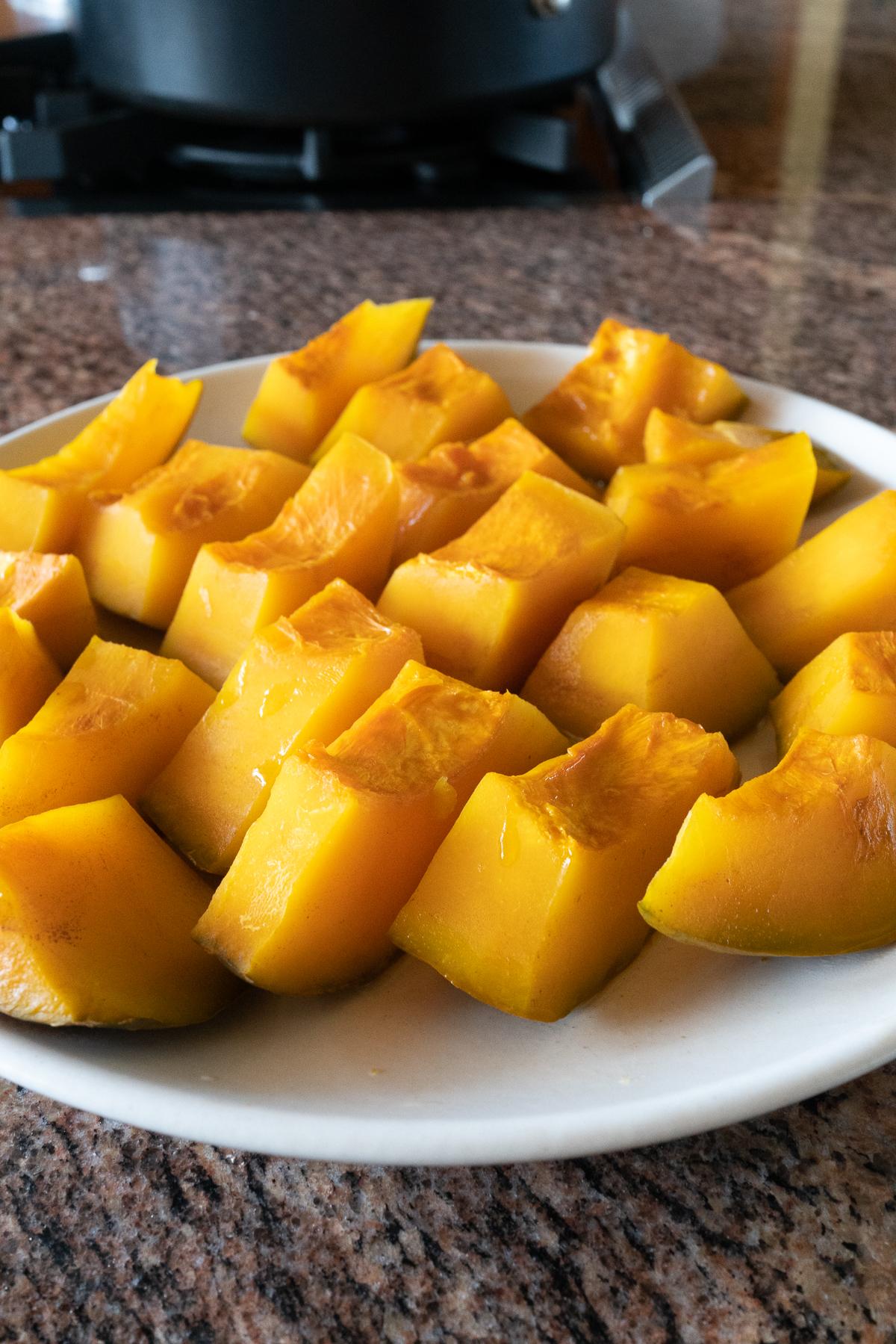
FAQs and Tips
It keeps for 3-4 days in the fridge. You can eat it warm (my preference) or at room temperature. Some people also like it cold!
Use a saucepan that is large enough for you to place all the kabocha pieces in a single layer. Kabocha breaks easily once cooked, so keeping them in a single layer will keep each piece looking pretty (otherwise the edges can break off).
Note: This is aesthetic thing, so if you only have a small pot I'd still make the recipe. It will be delicious, but just not as perfect looking (don't let that stop you though).
For easy weeknight dinners, I'll serve simmered kabocha as a side dish alongside Shoyu Chicken or Local-Style Chicken Tofu. It also goes well with Misoyaki Butterfish or Rafute (Okinawan Shoyu Pork). And rice! Always rice...that's the most important part.
No worries. You may use chicken broth in place of dashi. If you plan on making a lot of local recipes, I do think it's worth keeping dashi on hand. I keep this small container of dashi powder at home and use as needed (just mix the powder with hot water).
Simmered Kabocha Recipe
See below and enjoy ^_^
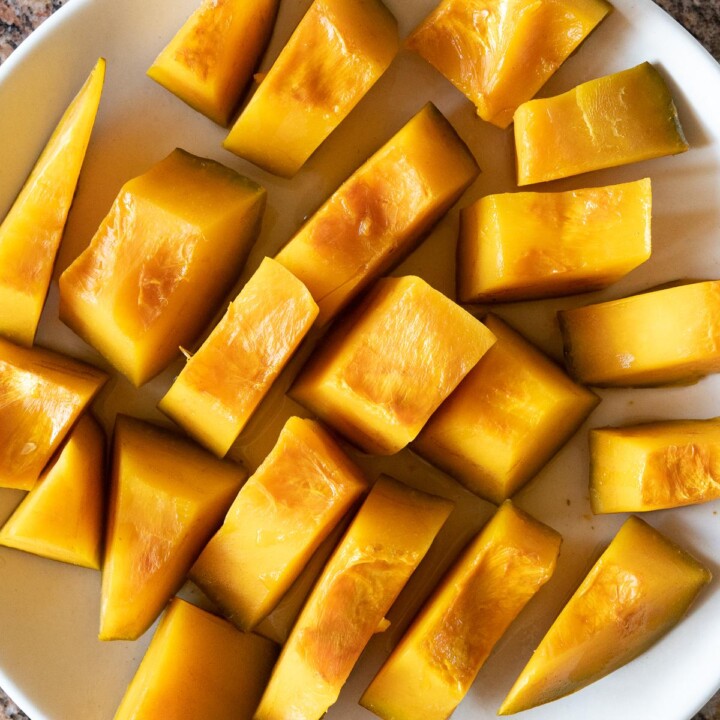
Simmered Kabocha Squash
Savory and comforting, this simmered kabocha squash side dish is easy to prepare and so onolicious.
Ingredients
- ½ of a whole kabocha
- 2 ½ cups dashi (or chicken stock)
- 2 tablespoons mirin
- 1 tablespoon soy sauce
- 1 teaspoon salt
Instructions
- Wash the kabocha and discard the seeds. Do not peel the kabocha.
- Cut kabocha into 1 ½ inch squares.
- Place the kabocha (ideally in a single layer) into a big saucepan. Combine the dashi, mirin, soy sauce, and salt, and pour into the saucepan.
- Cover and bring to a boil.
- Reduce the heat to low and let simmer, uncovered for 15 minutes (until the kabocha is tender but not mushy).
- Serve warm or at room temperature as a side dish. Eat and enjoy ^_^
Notes
Source: Adapted from Betty Hirozawa’s Kabocha by Lynette Lo Tom (featured in the October 14, 2020 edition of the Honolulu Star-Advertiser).

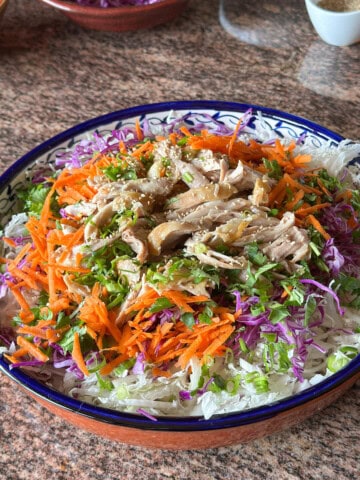

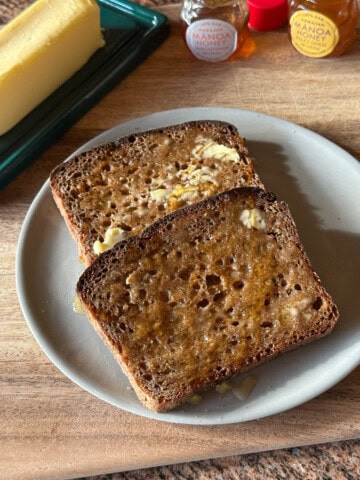

Mahalo for Reading!